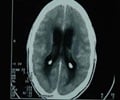A research team led by an Indian origin scientist has shed light on how brain areas that form memories are organized. They used a simple memory trick to achieve this.
The study shows that how perirhinal cortex can contribute to forming memories.According to Charan Ranganath, a professor at the UC Davis Centre for Neuroscience and the Department of Psychology, the brain puts together different items, the what, who, where and when, to form a complete memory.
It was previously believed that this association process occurred entirely in a brain structure called the hippocampus, but this appears not to be the case.
"We want to know how the brain areas that encode memory are organized," said Ranganath.
"If your memory is affected by aging or Alzheimer's disease, is there a way to learn that can capitalize on the brain structures that may still be working well?" he added.
During the study, Ranganath and his team used functional magnetic resonance imaging (fMRI) to see which parts of the brain were active when volunteers memorized pairs of words such as "motor/bear" or "liver/tree."
Advertisement
"It's a sort of memory trick," he said.
Advertisement
The results suggest that the perirhinal cortex probably can form simple associations, such as between the parts of a complex object.
This information is probably passed up to the hippocampus, which may create more complex memories, such as the place and time a specific object was seen.
The findings are published Aug. 28 in the journal Neuron.
Source-ANI
RAS/L












